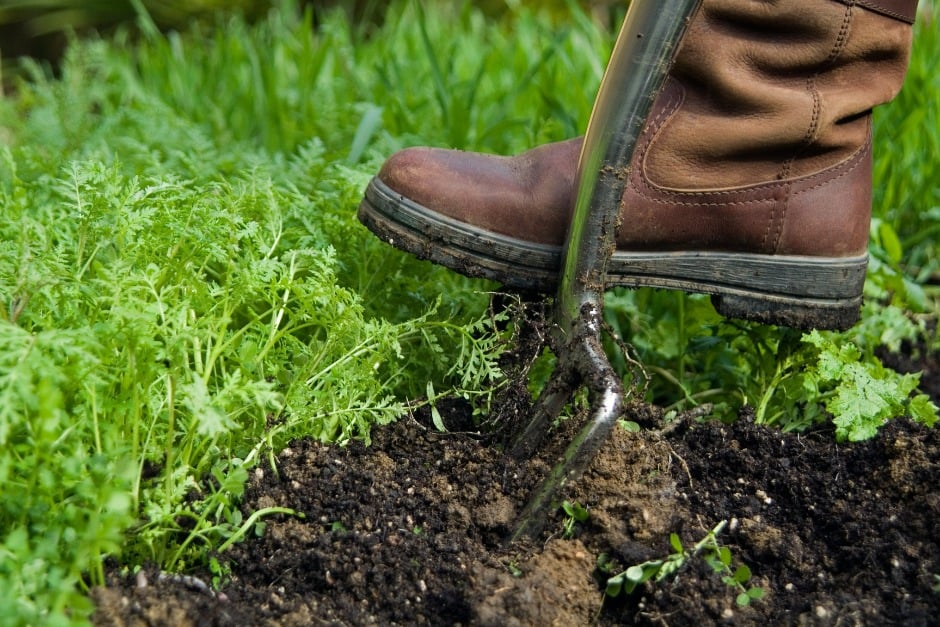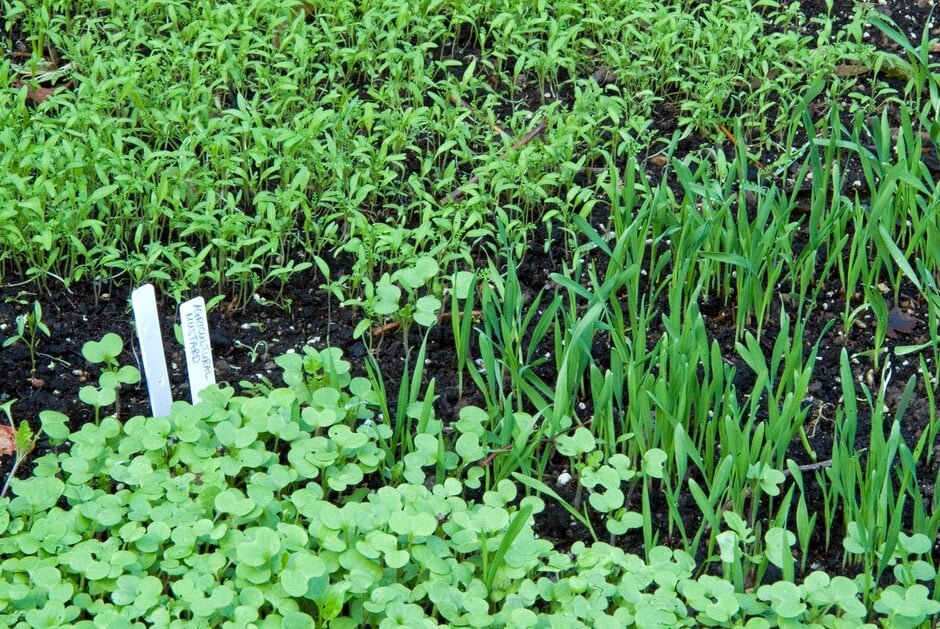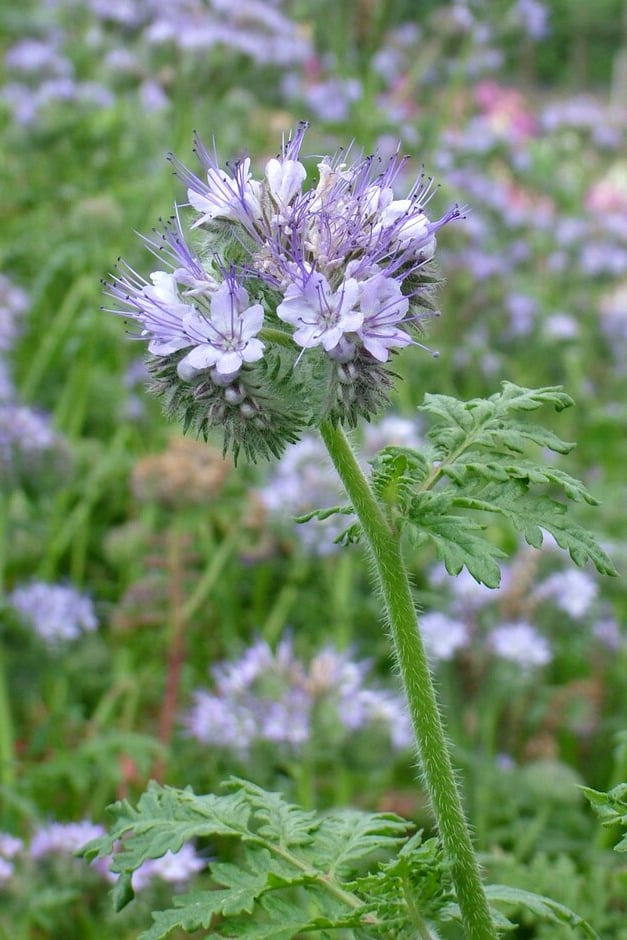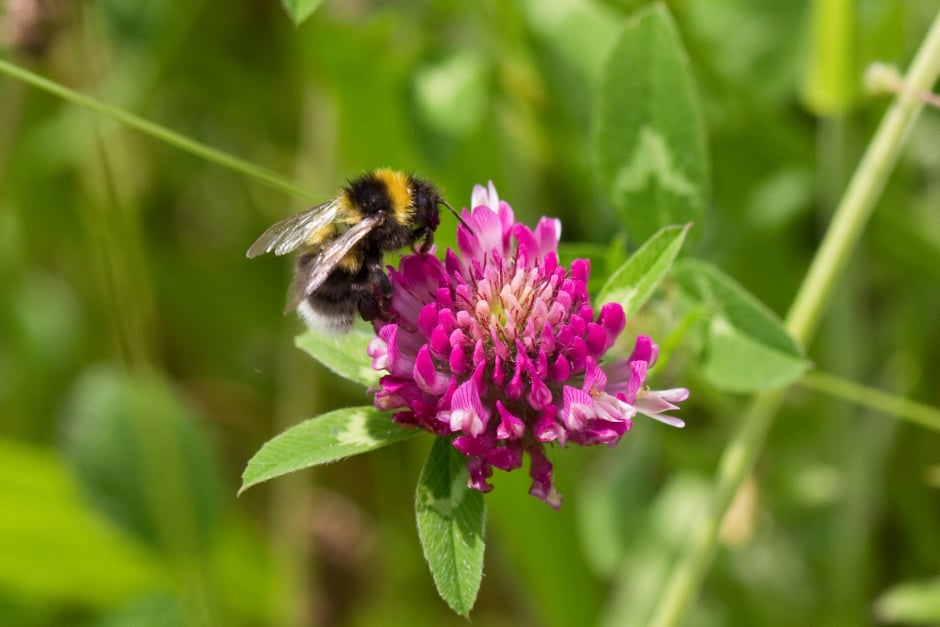Green manures have a long history, and anything that protects our precious soil must be good news. RHS Horticultural Advisor Caroline Mazzey is trying out the ancient wisdom

 I have two or three (it’s complicated) allotments, which I leave covered in the winter and uncover in the spring. This year, I’m switching the ugly sheeting for a prettier green carpet of useful plants – not for food, but as a living blanket – in the hope that growing a quick cover crop will stop torrential rain washing the soil away on my sloping allotment and help prevent too many random seeds from germinating.
I have two or three (it’s complicated) allotments, which I leave covered in the winter and uncover in the spring. This year, I’m switching the ugly sheeting for a prettier green carpet of useful plants – not for food, but as a living blanket – in the hope that growing a quick cover crop will stop torrential rain washing the soil away on my sloping allotment and help prevent too many random seeds from germinating.
I use some hideous old re-used plastic sheets to cover my soil when I’m not using it all, say from November to March. But recent concerns over microplastics have made me think more suspiciously about these old sheets. Before, I smugly thought I was upcycling and reusing in a good way, but now I wonder if I could do better. The ‘better’ that I’m trying to achieve is green manures.
Green manures seem to have enjoyed bursts of enthusiasm over the years, and have impressive credentials. Greeks and Romans wrote about them, and there’s evidence of ancient use in South America and China. In farming, it’s called cover cropping or a ley crop, and rather than a casual ‘year off’, it is a positive move to restore the soil. I’m sold!
 Above: seedlings of different green manures
Above: seedlings of different green manures –
Phacelia tanacetifolia (top), Hungarian rye grass (right) and agricultural mustard (bottom)
There are several plants to choose from for green manures, mostly depending on the time of year and how hardy you need them to be. The main thing is that these plants aren’t going to be around for long, so they need to grow quite fast. For my summer gaps I’ve tried fenugreek and buckwheat, and because these seedlings were unfamiliar to me, I sowed the seeds in straight lines so that when they germinated, I could recognise them as being deliberate.
Fenugreek may not fix nitrogen into the soil in the UK, which is a shame, but it creates a lot of bulk, which I will dig in as organic matter to improve the structure of the soil. The buckwheat didn’t do well unfortunately – I suspect the seed may have died in the cool wet spring – so I’ll have to try that again next year.

More recently, I have sown
Phacelia, but I can already see from the packet that rather than digging that in before it flowers, I would much rather let it bloom – there’s no way I’m missing out on that display.
For the next two months I’m trying red clover –
Trifolium pratense. It should last over the winter, but I won’t be able to leave it to flower. Though this seems mean in view of the bees who would otherwise feast on it, I will need to dig it next spring before it gets going, just because I’ll need the space.
For the last patches that become empty by the end of September, I am planning to use winter tares (vetches) – common vetch (
Vicia sativa) and Hungarian grazing rye (
Secale cereale). These are thoroughly hardy and will cover over the soil right through winter.

The one thing I don’t want to try (yet) is anything from the Brassica family. Mustard is a green manure and is winter hardy, but if I use it I will have to include it in my crop rotation like cabbages, broccoli and kale, and that seems like a disadvantage to me.
Find out everything you need to know about green manures
here.
You may also be interested in
Pick of the crop
 Look for the RHS Award of Garden Merit (AGM) when buying vegetable seed or small plants. You can also download the RHS lists of recommended cultivars.
Look for the RHS Award of Garden Merit (AGM) when buying vegetable seed or small plants. You can also download the RHS lists of recommended cultivars.
About the author – Caroline Mazzey
Caroline is an RHS Horticultural Advisor based at RHS Garden Wisley, juggling multiple allotments and a large family.

